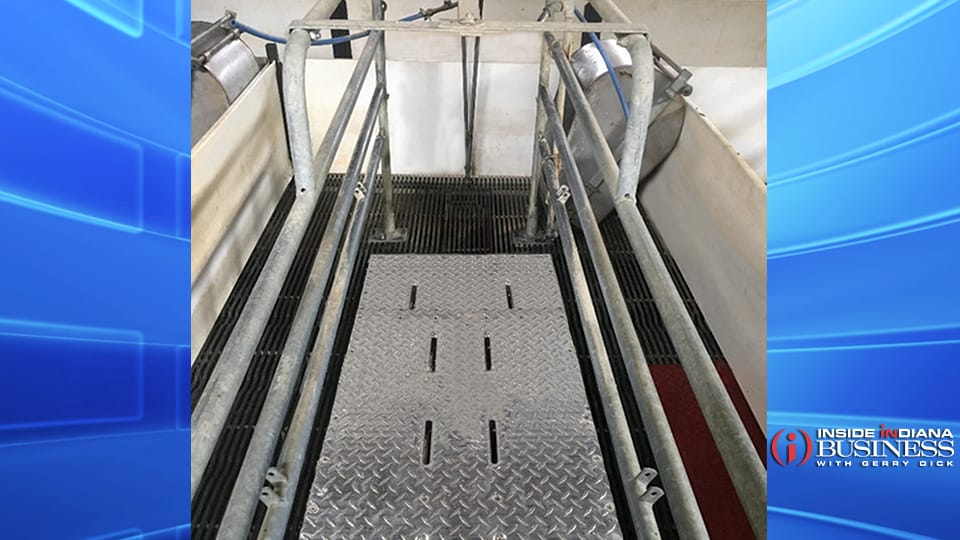Cooling mat for pigs developed at Purdue wins national award
Subscriber Benefit
As a subscriber you can listen to articles at work, in the car, or while you work out. Subscribe Now
A device designed by Purdue University researchers to help pork producers keep their pigs cool has earned national recognition.
The IHT Cooling Mats won the National Hog Farmer’s 2024 New Product Tour during the World Pork Expo in Des Moines, Iowa earlier this month.
The technology was developed by Allan Schinckel, a professor in Purdue’s College of Agriculture, and Robert Stwalley, associate clinical professor in Purdue’s Department of Agricultural and Biological Engineering.
Schinckel told Inside INdiana Business that modern sows are much more productive but increasing temperatures are having a negative impact.
“I realized and Dr. Stwalley realized that if we could make a pad that was large enough and use highly heat conductive materials—primarily aluminum—that we could just through conductive cooling cool the animals down,” he said.
The patented mats have aluminum tread plates on top of aluminum or copper pipes that circulate water. Sensors inside the mats can determine of the pig is too hot and then circulate new water to keep the mat cool.
“We made prototypes, and then we heated up animals [by making] the room 90 degrees Fahrenheit,” Schinckel said. “And we could show that we could, very effectively by laying on the cooling pad, remove all the excess heat from a lactating sow or gestating sow, or a boar.”
The mats have different designs for boars and sows they can fit in the animals’ crates.
Schinckel said he and his fellow researchers could measure precisely how much heat was removed from the pigs by how much warmer the water was when it came out.
“We can absolutely cool the animals down because they’re laying on a surface that will collect the excess heat from their body and then warm up the water that’s in the pipes.”
The mats, Schinckel said, creates many benefits, particularly for pregnant sows that generate more heat now than they did 40 years ago, especially in the South. He said the sows that lay on the mats to keep cool have been found to eat more and produce more milk for their young.
“We’ve increased litter size; a lot of producers now have 14, 15, even 16 pigs born alive,” he said. “In one trial, we increased litter weights by about 26%. And the sows also sleep much better.”
The technology was licensed by IHT Group in Winnipeg, Manitoba, which has begun manufacturing and selling the mats commercially. The company was the recipient of the award at the World Pork Expo.
“It’s quite an award to be voted number one,” he said. “We have worked with IHT, and they’re really getting into putting some of the pads on larger farms and then collecting data on the animal performance.”
While the mats are now being made available for farms, Schinckel said the research continues, particularly on the daily patterns of animals that are under heat stress, including when they tend to eat and how much they sleep when they’re on the cooling mats and when they’re not.
“We found more than three fold differences in melatonin of the cooled sows and the heat stress sows,” he said. “The heat stress sows don’t sleep at night, and the sows on the cooling pads are in deep sleep.”
Purdue said many of the researchers’ findings have been published in various scientific journals, including Livestock Science, Applied Engineering in Agriculture, and Journal of Animal Science.
The technology was patented through the Purdue Innovates Office of Technology and Commercialization.
